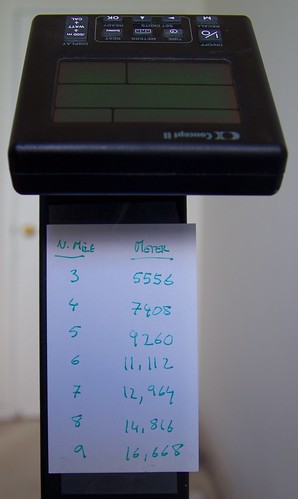Some time ago I tweeted that I was going to row a number of nautical miles on my trusty old Concept IIc machine. As an engineer, I use SI units for everything --- except on the water, where I use traditional units: nautical miles and knots.
A couple of rowers I know asked me how I had hacked the controller on the Concept IIc to change the units. This was my answer:
Many people miss the point, that the others were making a common mistake in problem-solving, a mistake that forecloses most creative solutions:
The mistake is working the solution instead of solving the problem.
Hidden in the question about the hack is an assumption: that the solution has to come from my programming skills (they know what I do, so it's not an unreasonable assumption). That assumption sets a path to a solution, which would include reprogramming the firmware inside the Concept IIc controller.
Having the ability to backtrack from that path into the beginning and to choose another path is the key process in the thinking process here. Too many people start on one path and can't get off it to pursue other possible paths to the solution.
By focussing on the problem, i.e. the question "what is to be achieved?", rather than the solution under consideration, changing the software, the mistake was avoided.
Yes, this is a trivial and obvious (after the fact) example, but often the difference between a non-working "solution" and a working solution is a matter of focus on the problem to be solved.
Alas, changing their focus is too hard for some would-be problem solvers.
